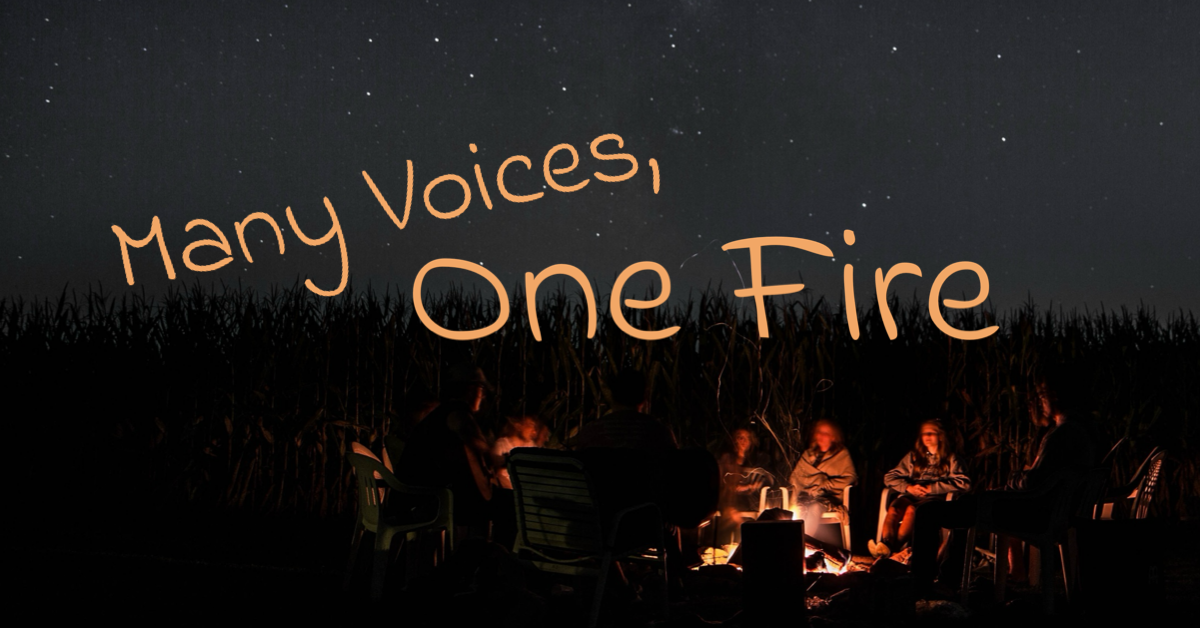
sermon from Mountain Ancestors Grove Joyful Moon, on Joy
by Dr. Amy Gorniak
Joy. A word that describes a sensation, a quality of feeling, and perhaps, too, a quality we can bring to how we understand ourselves, each other, and the worlds. I don’t usually play much with metaphors of light, in part because in our overly dualistic society they so often conjure extreme binaries: white and black, light and dark. And in part because my vision is woven of words and wordlessness rather than images.
But light does not only refer to image; when we speak of someone following their own values or standards, we speak of them doing things “by their lights” while gaining wisdom is “enlightenment” and our emotional experiences “light up” our faces. Nor is light only a quality of brightness, only defined by contrast. Light is inherently multi-colored, nuanced in ways that bring out subtleties of form, richness of textures that arise from the many ways light can be- that understanding and emotional experience can be- sharp, almost fierce; soft and tonal.
And when we want to engage deeply with something, to be in this kind of relationship that is knowing it, we often speak of how we see it, and the lenses we bring to bear in that knowing. Our lenses shape the images we carry of ourselves, each other, and the worlds, and of the relationships between and within all things.
What lenses are we bringing to bear on our world, our experiences these days? Are those lenses narrowing our focus or are they allowing us to widen our ways of knowing, to take in more subtleties of our experience?
We can think of joy as one lens through which we understand, one that opens us to qualities of our experience that are often overlooked, not in the “gratitude will heal you; joy will heal you” kind of way. These are not things we can use to do away with our pain and trauma. Those are always there. They live in our bones and blood, in the amniotic fluid in which we formed, in the foods we eat and we waters we drink; but so, too, are our joys, and our ancestors’ joys, and the echoes of our celebrations that will nourish the next generations.
By bringing joy to how we engage with the world, we open ourselves to a more subtle, richer texture of life, to other qualities of the light of our being and experiencing and relating. Life is not suddenly without the loss and hurt that are inherent in living, especially in this time of polycrisis. But joy opens us to envisioning differently, to seeing possibilities that so many of us seem to be blinded to by the frameworks of our current cultures. Joy is an act of resistance specifically because it is not able to be taken from us or sold back to us. It can strengthen our capacity to reclaim and reshape our lives from the isolation of hyperindividualist models that teach us to see ego strength as synonymous with the kind of unhealthy ego found in excessive attachment and the constant hunger for meaning and purpose and worth that drives our consumerist, extractive culture and its voracious consumption of our humanity, our fellow humans, and the other-than-human persons who make up our lives and selves.
Thus, joy becomes not only about a personally enriched experience but also about a communal capacity not just for adaptability in trauma and trouble, but also for dreaming differently together as we face the times we are in. Every generation has its Apocalypse, and ours is different only in the expansiveness of the destruction we are wreaking and the crises spilling into each other day by day.
When we look at these things, if we cannot also see the joys, and not just the large joys, the brightest lights, but celebrating the smaller moments, the little flashes of happiness and connection and all of the things that go into the patterning of our lives, we get sucked into doomism and nihilism. We lose capacity for resilience, for dreaming into, much less living, new ways of being. We tighten ourselves up, becoming narrowly focused on what hurts us, losing sight of our relationality in a self-perpetuating cycle that not only impacts our ability to then heal and dream and engage on that personal level, but also for just and joyful community as inherently interdependent beings.
Indeed, that narrowed focus, the not specifically opening to joy, limits our capacity to understand and repair harms and wrongs and traumas because when we focus only on those things, particularly from the perspective of those who are outside of the marginalized, disenfranchised communities on the receiving end of harm and of the need for respiration, we take away their richness, their texture, their humanity as well as our own. Recognition of our joy recognizes our humanity and the nuances of our lives in ways that humanize us for each other, helping to build bridges of understanding and reciprocity.
We often hear truisms such as “heal yourself; heal the world”… I would add that in healing the world, we heal ourselves in that cycle of reciprocity that is healthful community. t all depends on how you define healing, right? And it all depends on how you define joy. What do you think of when joy actually comes to mind? I have a personal touchstone that helps me find the signposts of my way through the labyrinth of life: the path is what sustains you. Joy is sustenance. As we celebrate this moon and carry the blessings of this night forward with us, and out into our communities, feel into that joy. Let it feed you, and let is guide your steps on the path of your life.